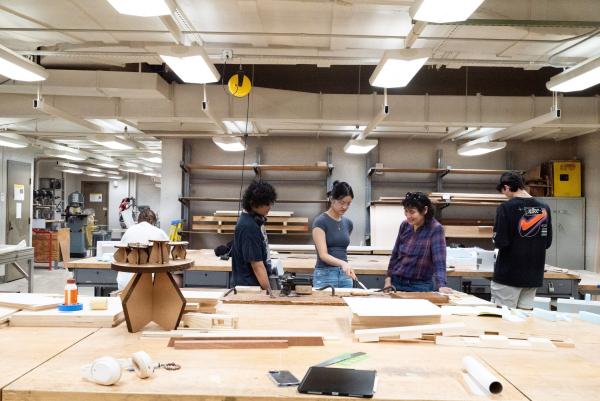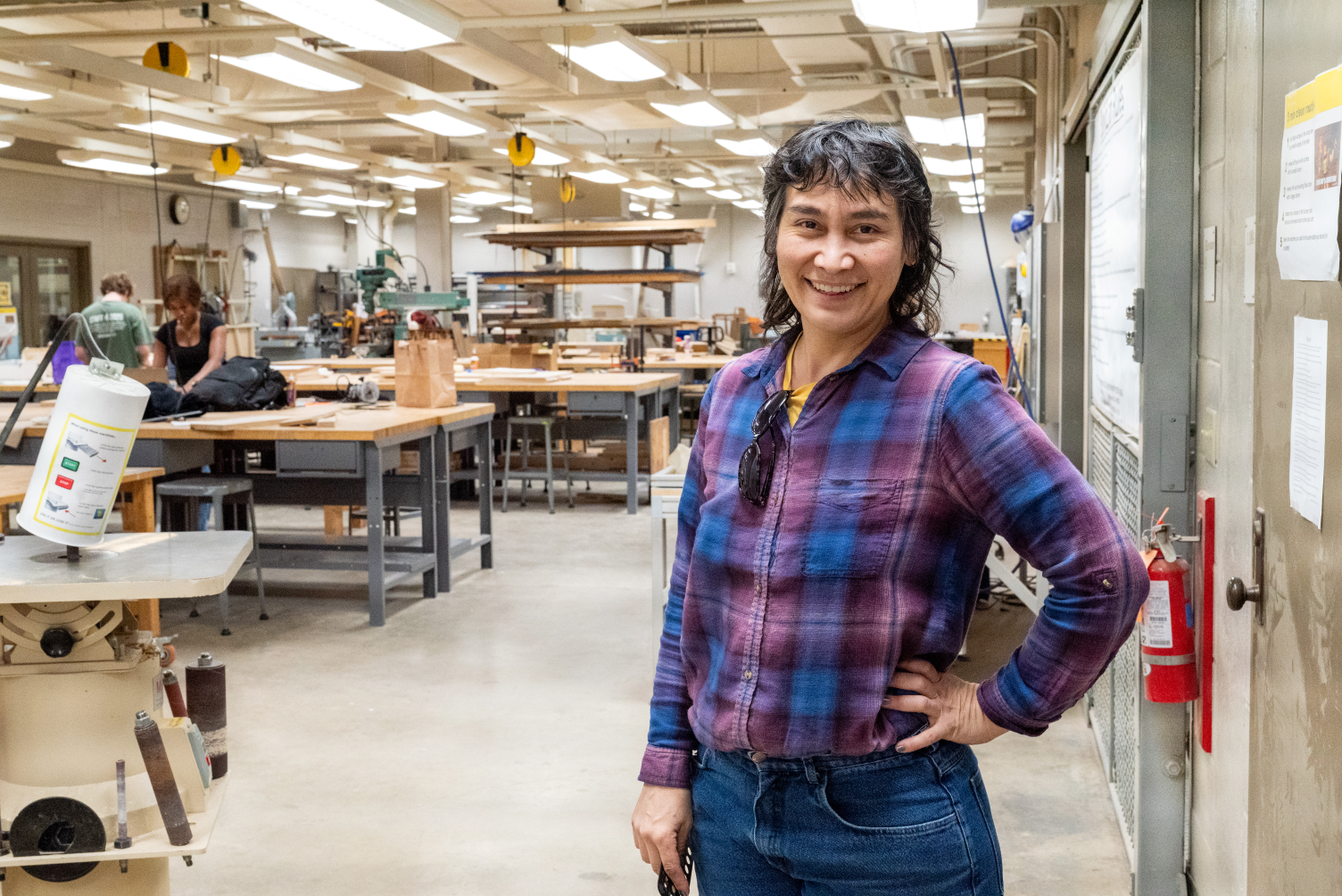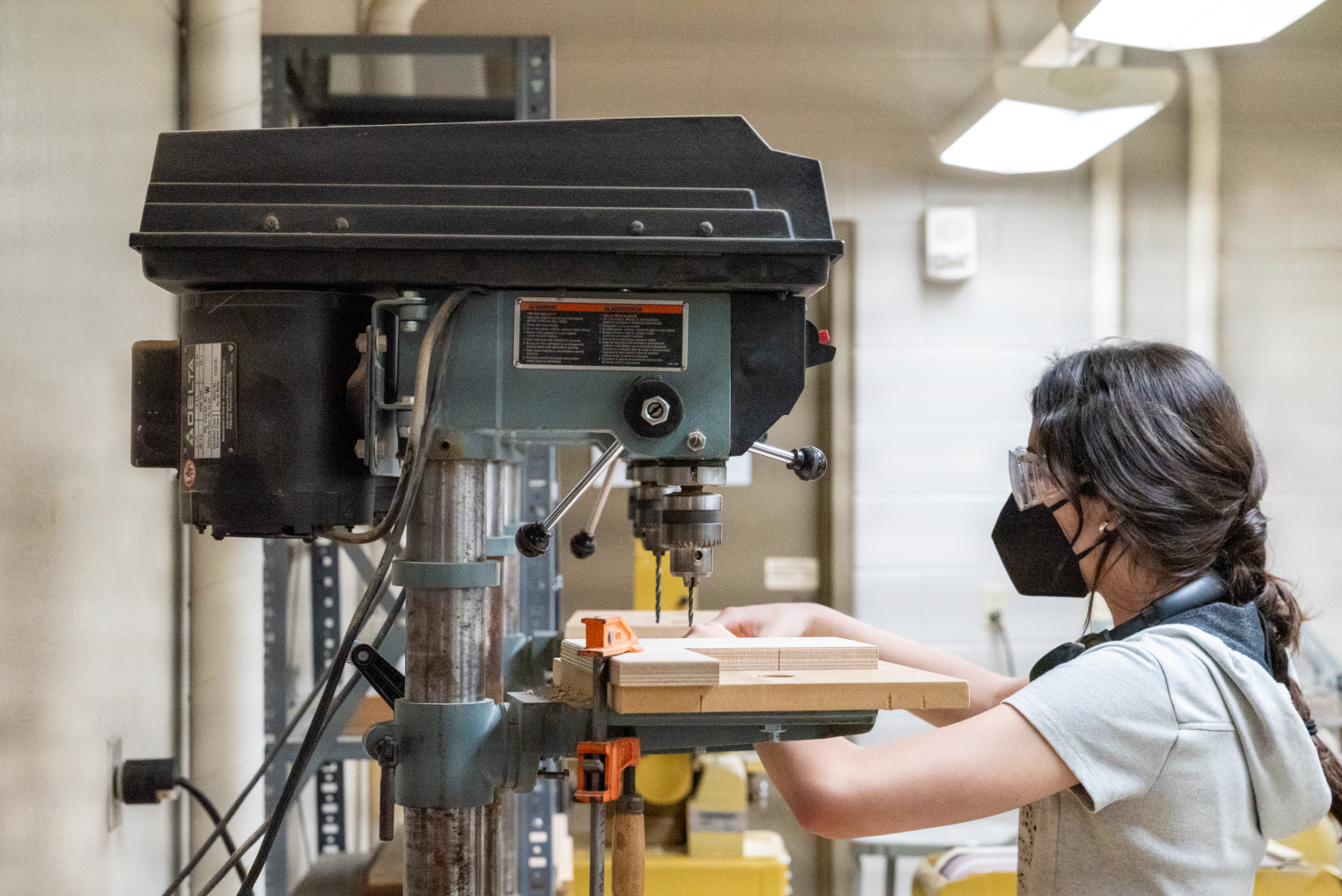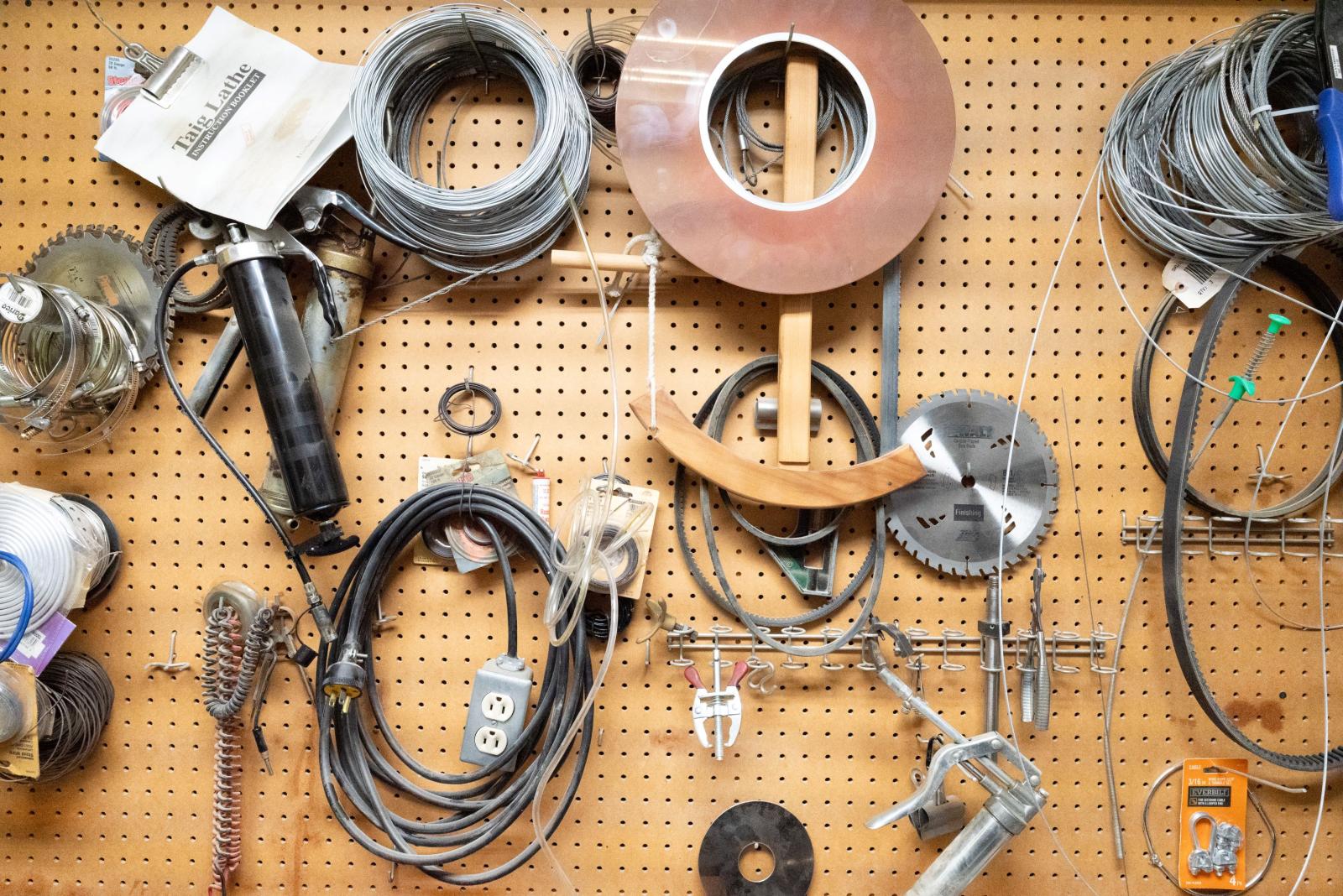An Afternoon with Build Lab Manager Andrea Nelson

While digital methodology continues to shape the future of spatial design, understanding the basics of physical material construction and fabrication remains an essential facet of design education. We sat down with Build Lab Manager Andrea Nelson to hear more about the UT School of Architecture’s 8,400 sf fabrication shop on the first floor of Goldsmith Hall (Room 1.101).
At the base of the Goldsmith stairs, the Build Lab feels like another world—the hum of machines and quiet focus of working students create a calming atmosphere that offers relief from hours behind a laptop screen.
While these tools may seem intimidating at first, Andrea Nelson is cheerfully available for any and all types of questions. Nelson has extensive experience in construction and carpentry, offering sage advice for problem-solving and a seemingly never-ending wealth of tips and tricks for the curious. She strives to maintain a lively environment that encourages collaborative learning and mutual support.
“Watching other people do creative things makes you feel more empowered to learn and get excited to realize your own projects” says Nelson, emphasizing that “there has to be a willingness to make mistakes when you’re experimenting.” The shop has a culture of conviviality and trust, as there are always a range of risks when utilizing power tools and heavy machinery.
The Build Lab welcomes all skill levels, but level 1 training is required for safety before facility access is granted. Once that’s finished, School of Architecture students can utilize some of the equipment on their own and sign up to attend more specialized trainings. Take advantage of the two Shopbot CNC Router with 96” by 60" beds, two "Saw Stop" table saws, 36" and 14" bandsaws, 8" and 16" jointers and a 24" planer, a 25-ton iron worker, Millermatic 252 welder, an 85-watt Hypertherm plasma cutter, two vacuum forming machines, and a mill. The CNC Router has an automatic tool changer for complex multi-layered milling. As technology quickly advances, Nelson is eager to expand into aluminum and acrylic capabilities for the CNC in the future.
Whether you’re looking to experiment in manipulating plastics or realizing a 3D model in wood, the Build Lab can play a pivotal role in how you articulate your ideas. Nurturing deeper connections to material and physical structures in the shop allows students’ individual design language to become richer and more grounded in practice. This hands-on knowledge can shape the way you approach spatial design, and you’ll probably have fun while you’re at it. If you’re not having fun and you feel frustrated with a fabrication challenge, don’t be afraid to ask questions and lean on Andrea Nelson for support—she is generous with her knowledge and is more than willing to help.
Follow the Build Lab on Instagram to stay in the loop and School of Architecture students can sign up for trainings on the Build Lab wiki.




